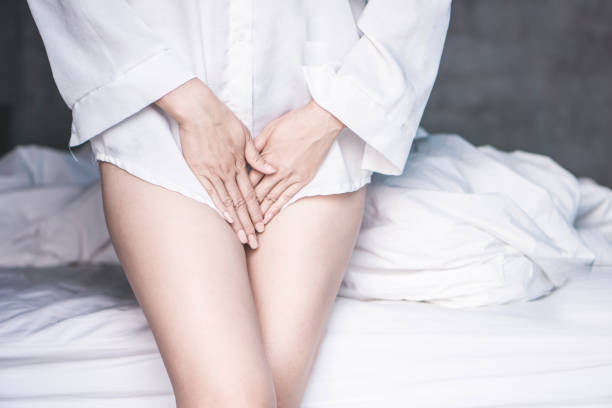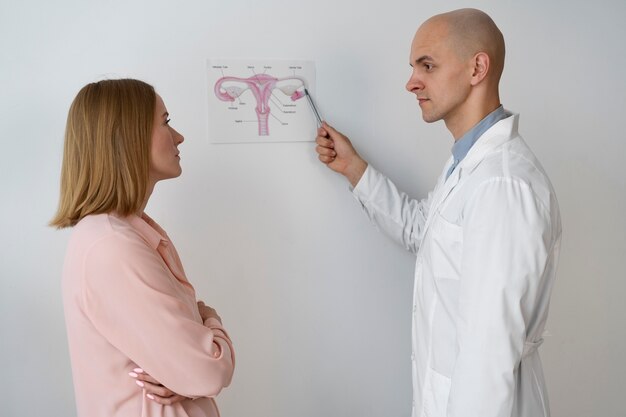What Is Clitoroplasty Surgery?
Clitoroplasty is a surgical procedure aimed at altering the clitoris, a highly sensitive organ containing over 8,000 nerve endings and recognized as the primary source of pleasure in the female reproductive anatomy. Located as a small nub of flesh at the apex of the vulva, the external genitalia, clitoroplasty is conducted with the objective of modifying the clitoris’ appearance while preserving its essential sensory characteristics. However, it is essential to note that clitoroplasty carries a substantial risk of potential sensory impairments and blood circulation complications.
Clitoroplasty involves a range of potential adjustments, such as reducing clitoral size, repositioning it, creating a clitoris when it is absent, or altering its appearance. Some individuals are born without a clitoris but have other female genitalia, and they may consider this procedure to address this anatomical variation.
Others opt for clitoroplasty to enhance the aesthetics of their clitoris, often making it smaller than its original size. Additionally, clitoroplasty can be part of gender affirmation surgery, allowing individuals to align their genitalia more closely with their gender identity. Lastly, it may also serve as a corrective procedure for damage resulting from genital mutilation, particularly female circumcision.


Reasons for undergoing the procedure
Clitoroplasty is a medical procedure that can be performed on individuals of various age groups, including children, teenagers, and adults. It is utilized to address specific congenital conditions, which are conditions that individuals are born with. This surgical intervention is often a component of feminizing genitoplasty, a broader set of procedures aimed at altering the appearance of the genitalia or creating new genital structures using existing tissue.
- Clitoromegaly: Clitoromegaly is the medical term for an enlarged clitoris. This condition can be present from birth (congenital) or develop later in life. In most cases, clitoromegaly in individuals assigned female at birth (AFAB) is attributed to exposure to androgens, a male hormone. Clitoroplasty is performed to help individuals with this condition achieve a more typical size and shape for their clitoris.
- Female pseudo hermaphroditism: This condition occurs when individuals are assigned female at birth based on their internal female reproductive organs, such as ovaries, but their external genitalia appear more male-like, with the presence of a penis or scrotum. Clitoroplasty may be included in feminizing surgery for individuals with this condition.
- Cosmetic clitoroplasty: Cosmetic clitoroplasty involves reducing or repositioning the clitoris. This procedure is most commonly sought by adults whose clitoris has undergone changes that affect their sexual satisfaction. However, other motivations for seeking cosmetic clitoroplasty may exist.
- Congenital adrenal hyperplasia (CAH): CAH is an endocrine disorder that can cause individuals assigned female at birth to have an enlarged clitoris resembling a penis. Clitoroplasty is employed to reshape the tissue and create a clitoris with a more typical appearance
- Gender-affirming surgery (feminizing genitoplasty): Gender-affirming surgeries are performed to align an individual’s physical characteristics with their gender identity when their assigned sex at birth does not match their true gender. For instance, a transgender woman may desire female genitalia. In such cases, a clitoroplasty is typically performed as part of a vaginoplasty, a procedure that creates a vagina.
- Clitoroplasty for atypical genitalia or intersex conditions: Atypical genitalia, also known as ambiguous genitalia or intersex genitals, refer to situations where an individual’s sexual anatomy does not conform to traditional male or female characteristics. Intersex traits may be evident at birth or become apparent later in life. Clitoroplasty is an option for individuals with atypical genitalia or intersex traits who wish to achieve their desired external genital appearance. Parents considering surgical options for their children in these circumstances should consult with healthcare providers to carefully evaluate the long-lasting effects and weigh the pros and cons of such procedures.
Before the procedure
The initial step involves scheduling an appointment with your healthcare team to thoroughly review your medical history, discuss the objectives of clitoroplasty, and address any potential risks associated with the procedure. During this consultation, any inquiries you may have about the surgery and the recovery process can be answered. Your healthcare provider may request imaging tests, blood work, and perform physical exams to ensure your readiness for the surgery. It’s essential to inform your provider of any allergies or medications you are currently taking during this phase. Furthermore, your provider will provide you with specific instructions for the day of the surgery, such as guidelines for fasting and arrival times at the hospital or surgical center.


During the procedure
Your healthcare team will closely monitor your vital signs, such as blood pressure, breathing rate, and heart rate, following your surgery to ensure your well-being. Once they are satisfied with your progress, they will authorize your discharge. It’s essential to arrange for a designated driver to ensure your safe transportation home, as you may require additional assistance during the first 24 to 48 hours after surgery.
During the initial phase of your recovery, you should anticipate experiencing some level of pain, swelling, and discomfort. Your healthcare provider may advise you to take time off from work or school and reduce your physical activities for at least one to two weeks. Keep in mind that the specifics of your recovery will depend on the complexity of your clitoroplasty procedure, so be sure to have a discussion with your surgeon to understand what to expect.
While some swelling is normal and should gradually improve within six weeks, you may still appear swollen for up to three months after the surgery. Your healthcare provider will schedule periodic follow-up appointments to monitor your healing progress.
These actions can help you heal more quickly:
- Several times a day, place a cold pack over your panties for 20 minutes.
- Comply with your dioctor’s instructions when using antibiotics and painkillers.
- Don’t have intercourse or put anything into your vagina for six weeks.
- Dress loosely to prevent irritating the area.
Outcome and Post Procedure
The recovery time for clitoroplasty can vary depending on the complexity of the procedure and individual healing processes. Your healthcare provider will provide specific post-operative care instructions, including guidance on genital care and any necessary restrictions on activities such as exercise. Typically, a full recovery can be expected within six to 12 weeks, and it is advisable to abstain from sexual intercourse for at least six weeks or until your provider approves its resumption. Additionally, your healthcare provider will schedule a follow-up appointment to assess the surgical outcome and your clitoris’s healing progress.
If you have undergone a clitoroplasty procedure, it is essential to promptly reach out to your healthcare provider if you encounter any concerning symptoms, such as a fever exceeding 100.4 degrees Fahrenheit (38 degrees Celsius), chills, persistent pain unresponsive to pain medication, or the presence of pus, bloody discharge, or unpleasant odors from the surgical site. These symptoms should not be ignored, and seeking medical attention is crucial to ensure proper care and recovery.






